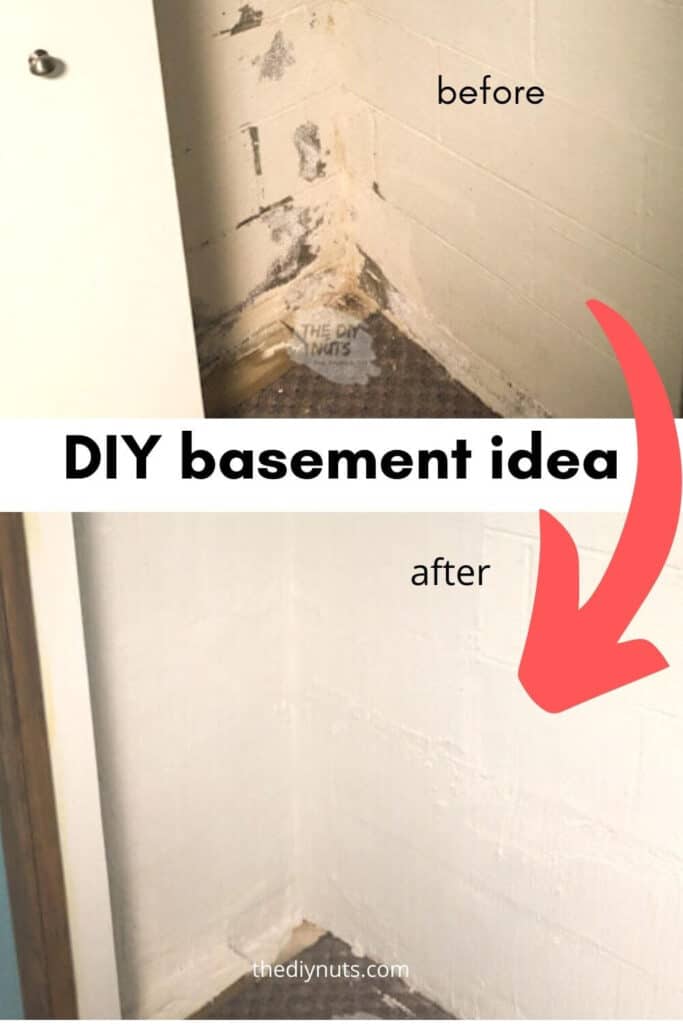DIY Waterproofing Basement Walls
Do you have spots on your basement walls that need to be waterproofed? We had this issue in the corner closet and decided to try out how to do our DIY waterproofing. Learn how to help waterproof cinderblock in your basement using MasterSeal 581.
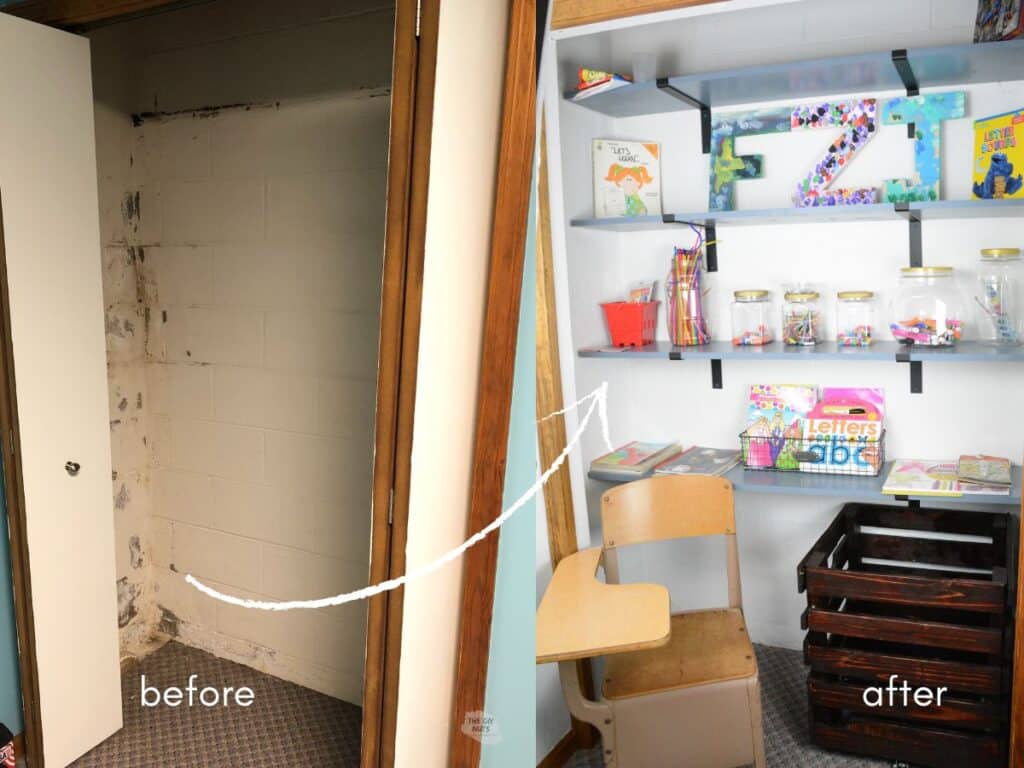
*Disclosure: I only recommend products I would use myself and all opinions expressed here are our own. This post may contain affiliate links that at no additional cost to you, I may earn a small commission. Read our full privacy policy.
My husband regularly works with concrete and cinderblock construction. He knew the exact product we would need to use to do this ourselves. Just note that if you have a lot of water damage, you may need to call in a professional for the best waterproof protection.
In this post, we will talk about how to use MasterSeal 581 and MasterEmaco A660 in order to improve your basement walls.
Why did we need to waterproof?
We had concrete masonry units (CMU/Cinderblocks) in our basement that needed a new coating of waterproofing. Therefore, we chose to use these products to help create a waterproof barrier. You can see how we were able to use a waterproofer on our walls as one of the projects in our DIY basement remodel.
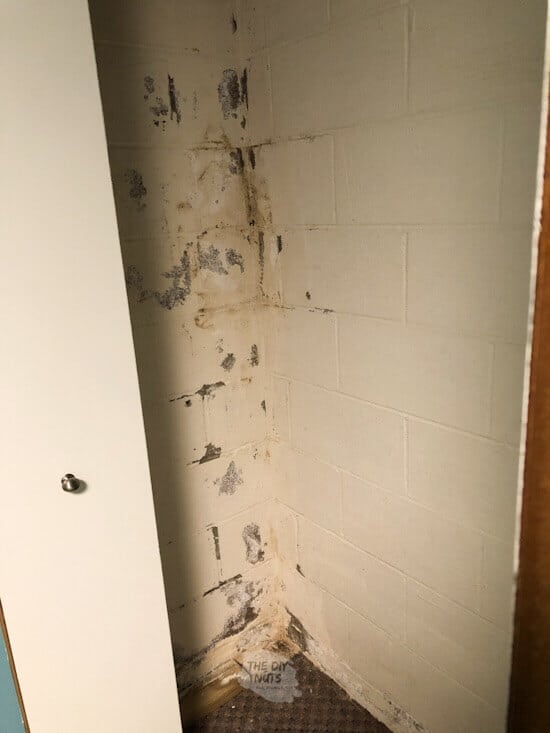
Who should use MasterSeal 581 and MasterEmaco A660?
This product is best for people who aren’t afraid of a little DIY. We definitely felt that this product was worth purchasing. You will need a few tools in order to use this product successfully.
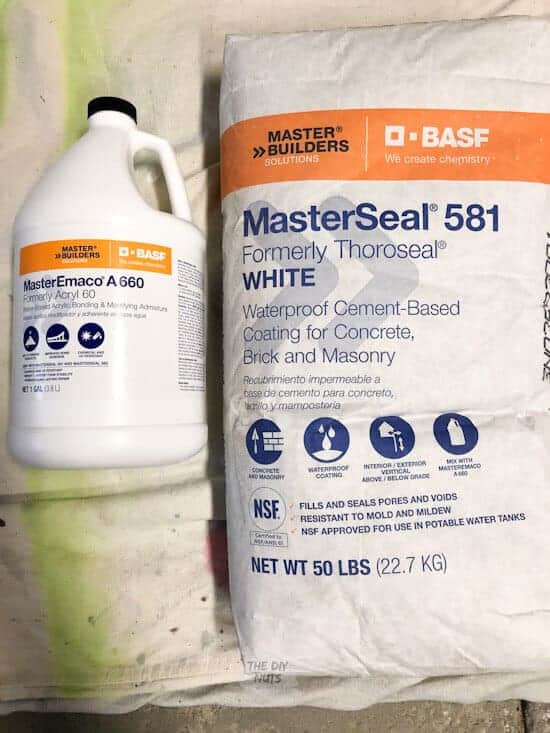
If you don’t want to try to pay a huge waterproofing company, then this product may help you. One thing to note, if you are having major water damage issues, then you need to find out why this happening. Don’t just use Masterseal 581 to put a bandaid on the problem.
Recommended Supplies
- 5-gallon bucket
- Masonry Brush
- Wire Brush
- Drop cloth
- 9 Amp Corded Spade Handle Mixer
- Masterseal 581
- MasterEmaco A660
Note: You can always rent the spade handle mixer from Home Depot, Lowe’s or your local hardware or rental supply store.
DIY Waterproofing Step-By-Step Tutorial
There are detailed instructions from the MasterSeal 581 datasheet on how to use mix this product. You can see how we followed those steps.
Step 1: Clean Cinderblock
Use a wire brush to remove extra loose pieces on your cinderblock wall.
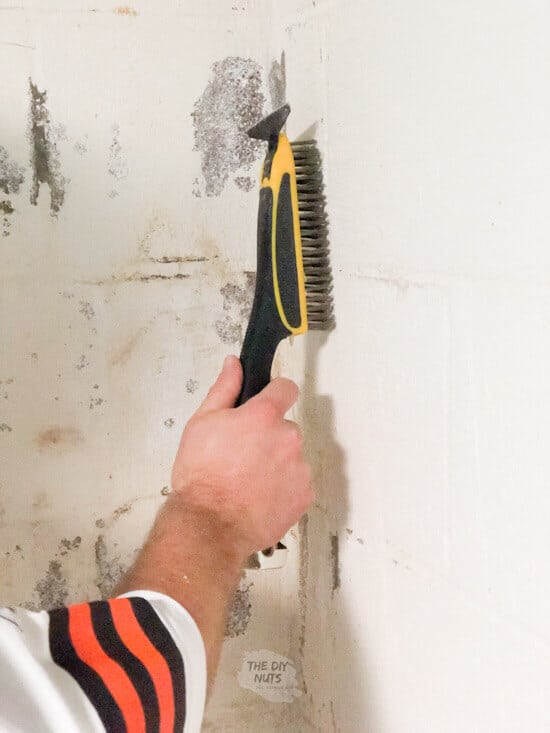
Step 2: Pour Liquid Into Powder
Follow mixing instructions to get the proper measurements or powder (Masterseal 581) with diluted liquid (water + Masterseal Emaco A 660).
Slowly add the liquid to the powder and mix in a 5-gallon bucket.
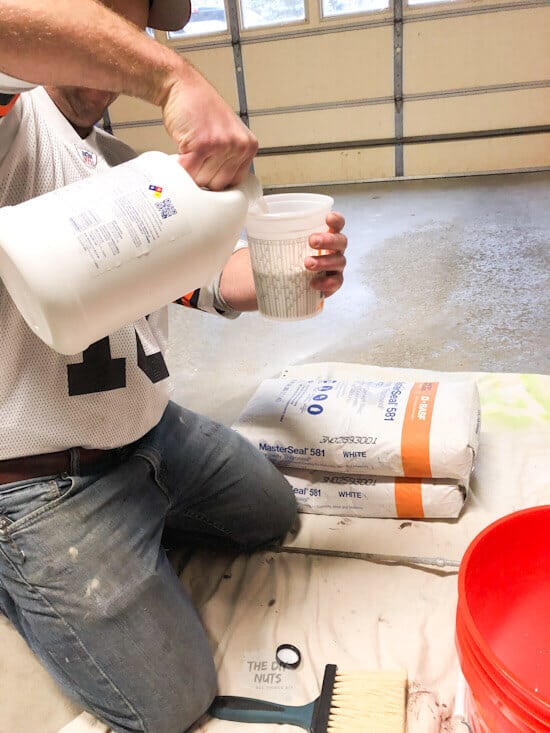
Step 3: Use Spade Mixer
Here is the consistency you are striving for.
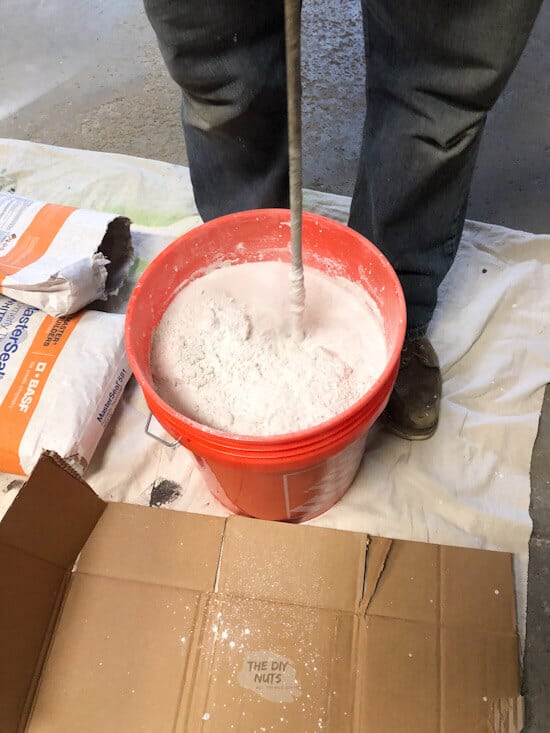
Step 4: Get Even Consistency
You are going for a thick pancake batter pictured below. Make sure to fully mix both parts together.
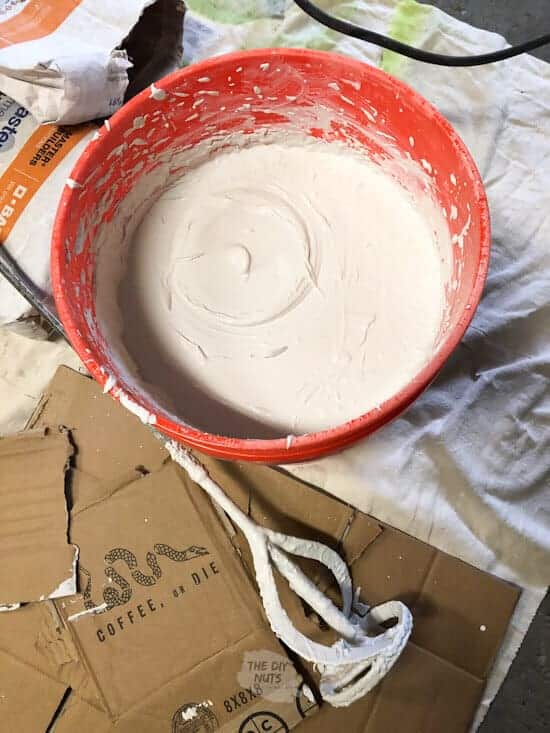
Step 5: Apply To Walls
Let it sit, then use a masonry brush to apply to the walls.
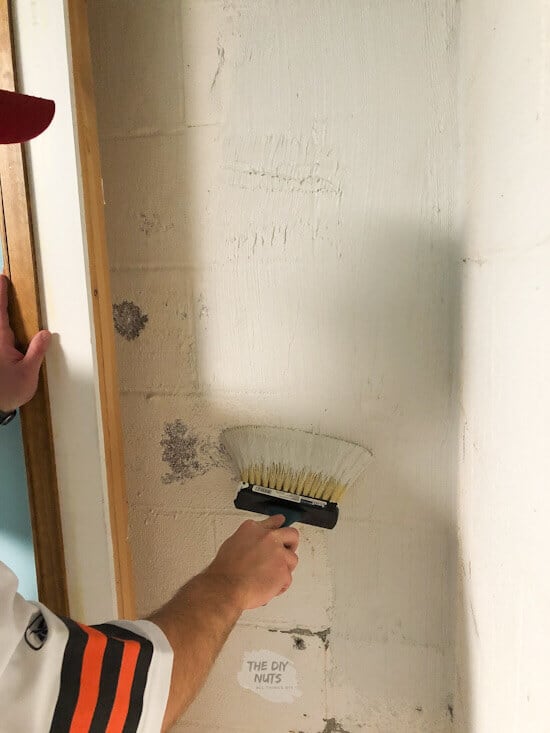
Pros
- This product is pretty easy to apply. Once the product is mixed, you are able to apply it rather quickly.
- The white color may not even need to be painted, depending on where you are putting the waterproof material.
- Great for fixing some areas in your basement. This is way less expensive than having a company come and do this for you.
Cons
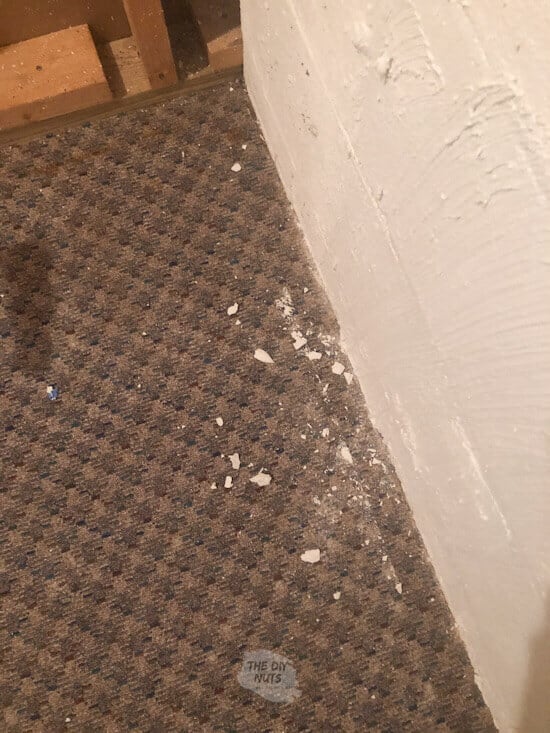
- This product requires a few extra tools for mixing.
- MasterSeal 581 mixed with MasterEmaco A660 is slightly messy to apply. For our basement closets, this wasn’t that big of a deal as we weren’t so attached to keeping the floor clean.
- You have to work quickly when applying the mixture before it will dry.
Alternative Waterproofing Materials
When selecting a product, consider factors such as the extent of water intrusion, the condition of the walls, and the specific needs of your project. It may be helpful to consult with a local hardware store or a professional in waterproofing to determine the best product for your specific situation.
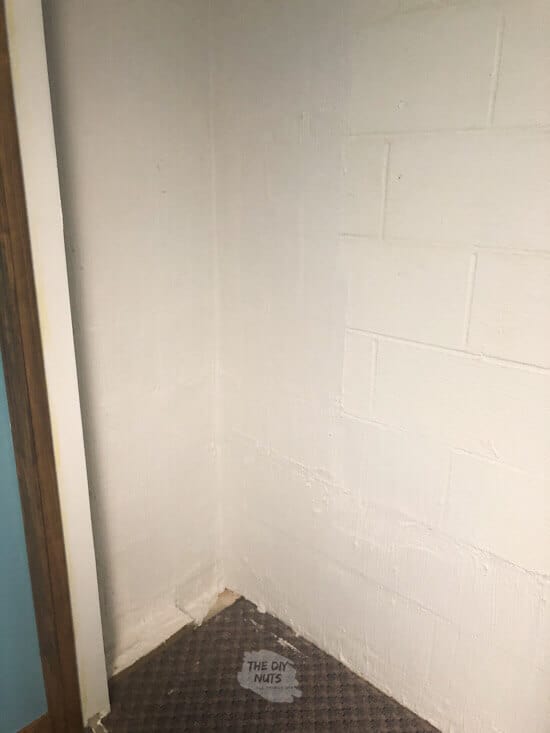
How-To FAQs
MasterSeal 581 (Formerly Thoroseal)is a non-fibrate, water-based bitumen emulsion powder product that mixes with MasterEmaco A660 in order to help waterproof a basement. The finished film makes a vapor-proof barrier.
Waterproofing cinderblock walls can be done by yourself, but it also depends on your skill level and comfort with DIY projects. If you have experience working with construction materials and following instructions, you can likely tackle the task yourself. If you have large amounts of water or unsure where the leaks are coming from then hiring a professional is probably best.
Your basement walls may need waterproofing if you notice water stains, mold, mildew or marks on the walls. A musty smell is also a sign of too much moisture in the basement. Sometimes, you might also see a white powdery substance on the walls, which means water is coming through. Cracks, peeling, or bubbling paint on the walls can also indicate you need to waterproof your walls. If you notice any of these signs, it’s important to get your basement walls waterproofed to prevent further damage and keep your basement dry and safe.
For our closet touch-ups, we used one 50 lb bag with the proper diluted Master Emaco A660 mixture. According to the website, one 50 lb. bag mixed will cover 225 ft squared-450 ft squared depending on how thick you apply the base or topcoat.
Masterseal 581 when mixed with MasterEmaco A660 makes a vapor barrier. We used this product to help fixed cinderblocks in our basement. I am sure it would work to coat new cinderblocks, but we used it to repair cinderblocks in our basement wall.
Follow us on Pinterest, YouTube or Facebook for more DIY inspiration!
Related Reading
Our nice-looking closet is proof that this DIY home project is a great, functional product. We love that we were able to rewater proof areas that seemed to be chipping off after 30 years. We feel pretty lucky that in our basement we only had a few spots to redo. We will have to revisit this post and review it each year to update how the waterproof barrier is holding up.
If you like this tutorial, please give it 5 stars below 🤩🤩🤩🤩🤩. Your support helps us continue to provide unique and budget-friendly DIYs.
How to Waterproof Cinderblock Walls in Your Basement
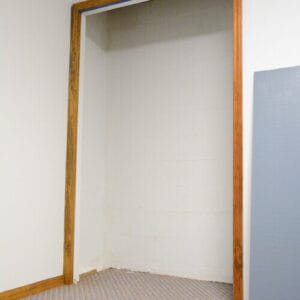
Equipment
- Wire brush
- Drop cloth
Supplies
- MasterSeal 581 Formerly Thoroseal
- MasterEmaco A660
Instructions
- Use a wire brush to remove loose pieces and debris from the cinderblock walls.
- Follow the mixing instructions provided with your waterproofing material. Slowly add the liquid (water + MasterEmaco A660) to the powder (MasterSeal 581) in a 5-gallon bucket.
- Mix thoroughly using a 9 Amp Corded Spade Handle Mixer until you achieve a thick pancake batter consistency.
- Let the mixture sit for a few minutes.
- Use a masonry brush to apply the mixture evenly onto the cinderblock walls.Work quickly to ensure proper coverage before the mixture dries.
- Let the applied coating dry completely as per the product's instructions.
- Ensure proper ventilation during the drying process.
Notes
- Prioritize safety by wearing appropriate protective gear, such as gloves and goggles.
- Follow all safety guidelines and precautions provided by the product manufacturer.
- Address any major water damage issues by identifying and fixing the underlying cause before applying the waterproofing solution.
- For detailed instructions and safety guidelines, refer to the specific product’s datasheet and follow the manufacturer’s recommendations.

